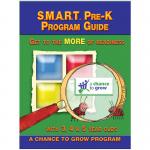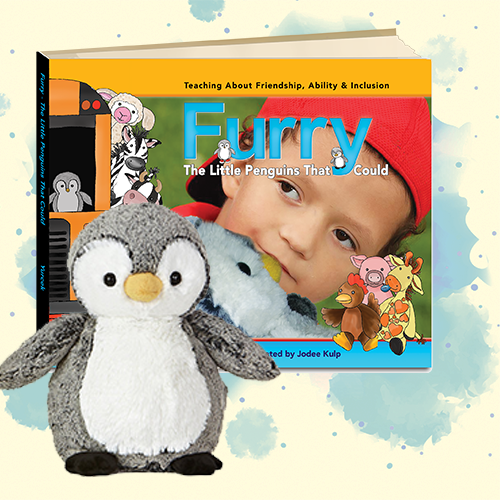Category: Family Fun
Protected: MATH BOOK TWO WORKSHEETS (9-10)
Protected: MATH BOOK TWO WORKSHEETS (7-8)
Protected: MATH BOOK TWO WORKSHEETS (1-3)
Protected: MATH BOOK ONE WORKSHEETS

23 Preschool Words Account for 96% of English Language
That’s right 23 Preschool Words!
A study of children in a childcare setting functioning at age-appropriate developmental levels showed that the following 23 words accounted for 96% of the language used over a three day period.
23 Preschool Words in descending columns of the frequency of use:
| I | the | that | you | here | some |
| no | want | a | what | more | help |
| yes/yea | is | go | on | out | all done |
| my | it | mine | in | off | finished |
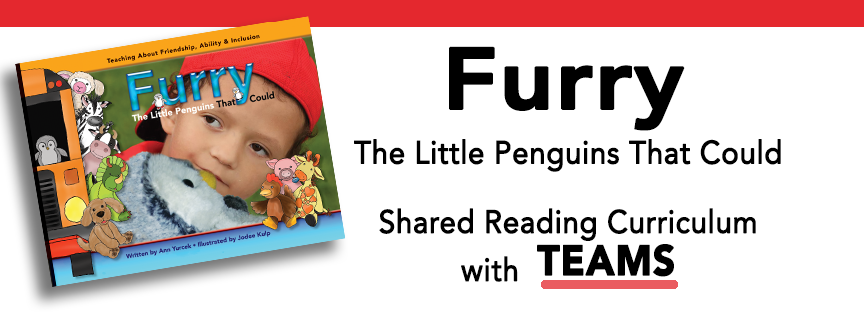
TEACHER CHALLENGE:
Shared Reading with non-verbal
emergent readers.
Augmentative and Alternative Communication (AAC) is an increasingly prevalent option for individuals with delays or disorders in their expressive communication abilities. For school-aged children, the use of research-based language selection and well-designed AAC systems are integral to academic success.
To read more on this complex and unique study download The Dynamic Learning Maps Core Vocabulary Overview developed by the DLM Professional Development Team at The University of North Carolina at Chapel Hill https://www.med.unc.edu/ahs/clds/files/2018/09/vocabOverview.pdf
Note: These core boards should never replace a well constructed currently available device/system.
RESOURCES FOR YOUR CLASSROOM
The final 36 core words have been researched by the Center for Literacy and Disability Studies and reflect words that are most commonly used in a classroom setting. In addition, Furry adds words that allow class participation for all children. Furry – The Little Penguins That Could Curriculum uses the 36 ACC Project Core cards as indicators, you are free to use any of the many varieties of cards. A full range of ACC free downloads are available at: http://corevocabulary.weebly.com/resources.html
For example, Chapter One in Furry The Little Penguins That Could Curriculum begins with learning the DLM Core Vocabulary word “I’ and for fun Furry added “penguin”. Children learn best by playing together and we have designed this curriculum so almost any child can participate in shared reading.
Furry The Little Penguins That Could
curriculum utilizes the work of the
Center for Literacy and Disabilities Studies.
The DLM Core Vocabulary Project was initiated to determine the vocabulary that is necessary for students with significant cognitive disabilities to engage, learn, and demonstrate knowledge in an academic environment. Instead of identifying every possible word, the goal was to identify and prioritize the smallest set of required words.
The first 40 words in the DLM Core Vocabulary:
| 1 | I | like | not | want |
| 2 | help | it | more | different |
| 3 | who | she | you | he |
| 4 | where | up | on | in |
| 5 | me | make | get | look |
| 6 | what | need | are | is |
| 7 | some | put | all | this |
| 8 | don’t | that | go | do |
| 9 | when | finished done | can | here |
| 10 | open | turn | stop | over |
The first set of 40 words was designed to create groupings of words that could help students with both communication and language growth. The words are organized in groups of 4 that lend themselves to expression and modeling of language usage.
FREE WEBINARS TO LEARN MORE!
Try out the FREE Communication Training Series Webinars
https://www.angelman.org/resources-education/
Getting Started

- Read Furry – The Little Penguins That Could to yourself so you:
- Know the story and characters. Think about the students you have in your classroom.
- Can this story help children enjoy reading?
- Will this book help your students value each other’s differences?
- Will the lessons learned in this book empower the children to develop friendships and acceptance that encourage inclusion?
How do I get started with The Furry Curriculum?
Start by surveying your students
We hope that Furry will make a difference to enhance the love of reading and increase inclusion, friendships,
The Elementary Reading Attitude Survey can be administered to an entire classroom in about 10 minutes.
The survey consists of 20 questions using the cartoon character Garfield to provide a quick indication of students’ attitudes toward reading.
We recommend administering this assessment before beginning the Furry curriculum and then administering after completing the Furry curriculum.
The Elementary Reading Attitude Survey can be found at http://resources.corwin.com/sites/default/files/Compendium_17.pdf
Note: The Professor Garfield Foundation is a nonprofit 501(c)(3) educational collaboration between Paws, Inc., the global headquarters for Garfield the Cat, and Ball State University, a nationally recognized leader in teacher training and digital education.
Let’s get started.
You Can Be S.M.A.R.T. at Home

Buy CORE AND MORE FOR YOUR HOMESCHOOL
S.M.A.R.T. is a developmental approach to teaching that takes advantage of current brain research. Its developmental approach is a critical and foundational part of learning readiness! Students who have developed mature readiness skills through S.M.A.R.T. have shown an increased attention span, ability to focus, and improved reading scores.
S.M.A.R.T. (Stimulating Maturity through Accelerated Readiness Training) integrates fun and challenging physical activities into the classroom that are designed to prepare the brain for reading and learning in a way that traditional instruction does not. Compatible with any existing curriculum, the multi-sensory activities stimulate the brain and increase its capacity to learn.
Simple Preschool Readiness Games
To Play Together With Very Young Child
Put the Rabbit in the Hole Game:
Tell the child to put the rabbit into the hole and he/she will do the necessary repetitions happily (up to ten reps, with longer and longer spaces between the targets. The path to the target will be wobbly at first but the job of starting and finishing a line is basic and fun.
V V V V V
O O O O OPut the Apples on the Tree Game:
Draw a simple tree and have the child put apples on it. The apples will be varied squiggles for a time, but
Dr. Lyelle Palmer, co-developer of the S.M.A.R.T. program shares, “The responsibility for success lies with the teacher/trainer in knowing both the content and the students and also have appropriate measures for regular feedback to all and appropriate action in response to that feedback. One of my goals is for all students to master the content to the level I have in mind.”
The S.M.A.R.T. Program integrates movement stimulation for kinesthetic, tactile, visual, and auditory stimulation to produce unprecedented results. Young children must move and some moves are better than others. Dr. Palmer shares his Reading Readiness charts with us.
Thousands of teachers have been trained in school teams (including the physical education teacher) for brain stimulation in the classroom, gymnasium/floor, and playground. A huge part of the program is movement activities that produce high levels of agility and coordination, strength, endurance, and flexibility.
Valuable Wisdom from Dr. Lyelle Palmer:
S.M.A.R.T. research has found more efficient ways to teach common knowledge for emergent readers. Young children are vulnerable to confusion in the testing/guessing environment when confronted with difficult/advanced choices. We want students to concentrate on the content rather than the process. We want to process to become automatic and unmediated. These distinctions are important for speed and accuracy. Our letters and words are tools that we use for construction.
The Right/Left Choice:
The S.M.A.R.T program does not teach left and right because teaching both together can confuse some children for life. S.M.A.R.T. only teaches right and when individuals know “right” direction. The person then automatically know anything that is not the “right” direction is “left”.
The Upper/Lower Case Choice:
Early letters are all upper case where
The b d p q Choice:
Once all Uppercase letters are solid, B D P Q
Use ballpoint pens not pencils with erasers: What?
Use
S.M.A.R.T. uses lined paper.
The purpose of
Children will develop eye-hand coordination
beginning at ages 2 1/2 – 3 when we make it fun
to draw vertical lines beginning at the top mark
(dot or circle) and draw the line downward.
S.M.A.R.T. works to spare children arm/hand/finger fatigue from undue pressure and better control.
S.M.A.R.T. teachers may use paint instead of crayons, markers or pens. They may place a sponge beneath the paper so that pressure punctures the paper to help the child work to lessen the pressure. Taping papers/templates to the wall or easel forces the child to use the entire arm and develop control without pressing down so hard. Pencil grippers also help. Upper case letters for younger children provide longer strokes and create a base of coordination for later use with lower case letters.
S.M.A.R.T. Tracing is not practice ,
it is instruction with instant feedback.
Tracing lines and outlines on wall posters is also necessary. Play “Drivers Ed” found on page 70 of
So what is S.M.A.R.T.?
Simulating – Brains learn by seeing, hearing and touching things many, many, many times.
Maturity – Brain stimulation through the S.M.A.R.T. Pre-K program aims to mature sensory pathways of vision, auditory and tactile/kinesthetic.
Acceleration – To help messages travel in our brain with efficiency and speed.
Readiness – Creating foundation skills so the Brain Stem can perform automatic functions and the Cortex can perform higher functioning work.
Trains – The body and brain to be ready to learn
Compared to norms, half of the students in the Stimulating Maturity through Accelerated Readiness Training (S.M.A.R.T.) program achieve at the 75 percentile on formal and informal tests, and 25% are in the top 10 percentile.
Remember lines before circles!
S.M.A.R.T. CURRICULUM
Furry and the Stuffies are on board with the Minnesota Learning Resource Center and the S.M.A.R.T. Program. A 2011 study found that children who received S.M.A.R.T. programming maintained their reading gains through second grade, while more than half of the control students were failing again in reading by second grade.
We highly recommend you purchase
Learn more? http://actg.org/programs-services/mlr
Read Aloud 21 Day Challenge
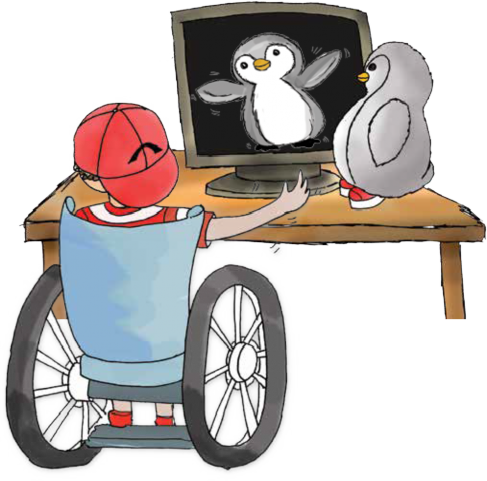
The USA has a literacy problem. Join us as we work to change this!
Literacy is the foundation for all learning, yet nearly 40% of all fourth graders in the United States read below the basic level. 60% of all juvenile offenders have problems reading. 40% of adult Americans have trouble reading.
Furry supports the Read Aloud
21 Day Challenge initiative for families.
http://www.readaloud.org/21daychallenge.html
Furry – The Little Penguin That Could is designed to be read one chapter at a time aloud. Through the true story of a Kindergarten full of stuffed animals and a little boy who could not speak a miracle happens.
And that miracle builds empathy in children, besides increasing love for reading and being read to. Fictional characters help create empathy in children. Furry and Mac are REAL!
U.S. literary average: below-basic –
Let’s become a nation of readers again instead of screentime
Put it all together, and what do you get? Our average literacy score of 270 (global literacy rate: 273) out of 500 puts U.S. adults at Level 2, or basic, literacy. What’s the latest US Literacy Rate https://www.wyliecomm.com/2019/03/us-literacy-rate/
According to a 2018 survey of American families, only 30 percent of parents reported reading aloud to their kids for at least 15 minutes a day. Yet reading together aloud for only 15 minutes a day creates immense rewards for children and their families. http://www.readaloud.org/surveyreport.htm
Snuggle Down Cuddle Up – Red Shoes Rock Challenge
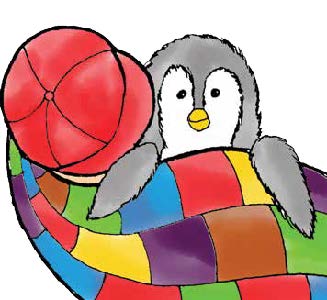
Starting any day you want to begin, Furry and Mac challenge your family to a “Snuggle Down, Cuddle Up” Challenge of one month of bedtime reading. We offer a whole bunch of FREE ideas for each chapter of Furry: The Little Penguins That Could to help children grow and families enjoy time together. Or Join Our FREE Furry the Penguin Curriculum Program and take a chapter per week.
We want you and your children to cherish this time together of memory-making.
Reading is a tradition that will follow your children through adulthood and these cherished moments are gifted to your future grandchildren and great-grandchildren.
FREE when you join our Furry Program
About our Shared Reading Curriculum (email us it is FREE!)
- Curriculum Overview (Online) – 46 pages
- Anny’s Notebook – About Mac’s Journey
- Drawing Book
Chapter 1 Let Us Start at the Beginning
- Anny’s Notebook – Chapter 1 – Mac’s Journey
- Chapter 1 Video
- Chapter 1 Curriculum (Download – 17 pages)
- Chapter 1 Empowerment Sheets (Download – 65 pages)
- Recommended Additional Books (Download – 1 page)
- Today I learned – let’s talk
Chapter 2 About Stuffies
- Anny’s Notebook – Chapter 2 – Mac’s Journey
- Chapter 2 Video
- Chapter 2 Curriculum (Download – 13 pages)
- Chapter 2 Empowerment Sheets (Download – 41 pages)
- Recommended Additional Books (Download – 1 page)
- Today I learned – let’s talk
Chapter 3 Stuffie Jobs
- Anny’s Notebook – Chapter 3 – Mac’s Journey
- Chapter 3 Video
- Chapter 3 Curriculum (Download – 14 pages)
- Chapter 3 Empowerment Sheets (Download – 42 pages )
- Recommended Additional Books (Download – 1 page)
- Today I learned – let’s talk
Chapter 4 I Forgot
- Anny’s Notebook – Chapter 4 – Mac’s Journey
- Chapter 4 Video
- Chapter 4 Curriculum (Download – 16 pages)
- Chapter 4 Empowerment Sheets (Download – 48 pages)
- Recommended Additional Books (Download – 2 pages)
- Today I learned – let’s talk
Chapter 5 More About Stuffies
- Anny’s Notebook – Chapter 5 – Mac’s Journey
- Chapter 5 Video
- Chapter 5 Curriculum (Download – 12 pages)
- Chapter 5 Empowerment Sheets (Download – 36 pages)
- Recommended Additional Books (Download – 1 page)
- Today I learned – let’s talk
Chapter 6 Let’s Begin
- Anny’s Notebook – Chapter 6 – Mac’s Journey
- Chapter 6 Video
- Chapter 6 Curriculum (Download – 12 pages)
- Chapter 6 Empowerment Sheets (Download – 32 pages )
- Recommended Additional Books (Download – 1 page)
- Today I learned – let’s talk
Chapter 7 The Day to be Remembered
- Anny’s Notebook – Chapter 7 Mac’s Journey
- Chapter 7 Video
- Chapter 7 Curriculum (Download)
- Chapter 7 Empowerment Sheets (Download)
- Recommended Additional Books (Download – 1 page)
- Today I learned – let’s talk
Chapter 8 Ready-Set-Go!
- Anny’s Notebook – Chapter 8 – Mac’s Journey
- Chapter 8 Video
- Chapter 8 Curriculum (Download)
- Chapter 8 Empowerment Sheets (Download)
- Recommended Additional Books (Download – 1 page)
- Today I learned – let’s talk
Chapter 9 The New Boy and the Kids
- Anny’s Notebook – Chapter 9 – Mac’s Journey
- Chapter 9 Video
- Chapter 9 Curriculum (Download)
- Chapter 9 Empowerment Sheets (Download)
- Recommended Additional Books (Download – 1 page)
- Today I learned – let’s talk
Chapter 10 A Letter from a Boy
- Anny’s Notebook – Chapter 10 – Mac’s Journey
- Chapter 10 Video
- Chapter 10 Curriculum (Download)
- Chapter 10 Empowerment Sheets (Download)
- Recommended Additional Books (Download – 1 page)
- Today I learned – let’s talk
Chapter 11 “Snack” Penguin
- Anny’s Notebook – Chapter 11 – Mac’s Journey
- Chapter 11 Video
- Chapter 11 Curriculum (Download)
- Chapter 11 Empowerment Sheets (Download)
- Recommended Additional Books (Download – 1 page)
- Today I learned – let’s talk
Chapter 12 Sleepover Penguin
- Anny’s Notebook – Chapter 12 – Mac’s Journey
- Chapter 12 Video
- Chapter 12 Curriculum (Download)
- Chapter 12 Empowerment Sheets (Download)
- Recommended Additional Books (Download – 1 page)
- Today I learned – let’s talk
Chapter 13 Twin Penguins
- Anny’s Notebook – Chapter 13 – Mac’s Journey
- Chapter 13 Video
- Chapter 13 Curriculum (Download)
- Chapter 13 Empowerment Sheets (Download)
- Recommended Additional Books (Download – 1 page)
- Today I learned – let’s talk
Chapter 14 Hello, New Penguin
- Anny’s Notebook – Chapter 14 – Mac’s Journey
- Chapter 14 Video
- Chapter 14 Curriculum (Download)
- Chapter 14 Empowerment Sheets (Download)
- Recommended Additional Books (Download – 1 page)
- Today I learned – let’s talk
Chapter 15 Furry & Mac
- Anny’s Notebook – Chapter 15 – Mac’s Journey
- Chapter 15 Video
- Chapter 15 Curriculum (Download)
- Chapter 15 Empowerment Sheets (Download)
- Recommended Additional Books (Download – 1 page)
- Today I learned – let’s talk
Chapter 16 Furry & School
- Anny’s Notebook – Chapter 16 – Mac’s Journey
- Chapter 16 Video
- Chapter 16 Curriculum (Download)
- Chapter 16 Empowerment Sheets (Download)
- Recommended Additional Books (Download – 1 page)
- Today I learned – let’s talk
Chapter 17 A Roomful of Stuffies
- Anny’s Notebook – Chapter 17 – Mac’s Journey
- Chapter 17 Video
- Chapter 17 Curriculum (Download)
- Chapter 17 Empowerment Sheets (Download)
- Recommended Additional Books (Download – 1 page)
- Today I learned – let’s talk
Chapter 18 Stuffie Support
- Anny’s Notebook – Chapter 18 – Mac’s Journey
- Chapter 18 Video
- Chapter 18 Curriculum (Download)
- Chapter 18 Empowerment Sheets (Download)
- Recommended Additional Books (Download – 1 page)
- Today I learned – let’s talk
Chapter 19 School Days Red Shoe Days
- Anny’s Notebook – Chapter 19 – Mac’s Journey
- Chapter 19 Video
- Chapter 19 Curriculum (Download)
- Chapter 19 Empowerment Sheets (Download)
- Recommended Additional Books (Download – 1 page)
- Today I learned – let’s talk
Chapter 20 Stuffy? No School
- Anny’s Notebook – Chapter 20 – Mac’s Journey
- Chapter 20 Video
- Chapter 20 Curriculum (Download)
- Chapter 20 Empowerment Sheets (Download)
- Recommended Additional Books (Download – 1 page)
- Today I learned – let’s talk
Chapter 21 Mom Hatches a Plan!
- Anny’s Notebook – Chapter 21 – Mac’s Journey
- Chapter 21 Video
- Chapter 21 Curriculum (Download)
- Chapter 21 Empowerment Sheets (Download)
- Recommended Additional Books (Download – 1 page)
- Today I learned – let’s talk
Chapter 22 The Christmas Miracle
- Anny’s Notebook – Chapter 22 – Mac’s Journey
- Chapter 22 Video
- Chapter 22 Curriculum (Download)
- Chapter 22 Empowerment Sheets (Download)
- Recommended Additional Books (Download – 1 page)
- Today I learned – let’s talk
Chapter 23 Snow Piles are Growing
- Anny’s Notebook – Chapter 23 – Mac’s Journey
- Chapter 23 Video
- Chapter 23 Curriculum (Download)
- Chapter 23 Empowerment Sheets (Download)
- Recommended Additional Books (Download – 1 page)
- Today I learned – let’s talk
Chapter 24 Birthday Surprise
- Anny’s Notebook – Chapter 24 – Mac’s Journey
- Chapter 24 Video
- Chapter 24 Curriculum (Download)
- Chapter 24 Empowerment Sheets (Download)
- Recommended Additional Books (Download – 1 page)
- Today I learned – let’s talk
Chapter 25 Thank You Thank You
- Anny’s Notebook – Chapter 25 – Mac’s Journey
- Chapter 25 Video
- Chapter 25 Curriculum (Download)
- Chapter 25 Empowerment Sheets (Download)
- Recommended Additional Books (Download – 1 page)
- Today I learned – let’s talk
Chapter 26 Mac’s Back
- Anny’s Notebook – Chapter 26 – Mac’s Journey
- Chapter 26 Video
- Chapter 26 Curriculum (Download)
- Chapter 26 Empowerment Sheets (Download)
- Recommended Additional Books (Download – 1 page)
- Today I learned – let’s talk
Chapter 27 Kindergarten Circus Graduation
- Anny’s Notebook – Chapter 27 – Mac’s Journey
- Chapter 27 Video
- Chapter 27 Curriculum (Download)
- Chapter 27 Empowerment Sheets (Download)
- Recommended Additional Books (Download – 1 page)
- Today I learned – let’s talk
Chapter 28 Penguin Classroom Wisdom
- Anny’s Notebook – Chapter 28 – Mac’s Journey
- Chapter 28 Video
- Chapter 28 Curriculum (Download)
- Chapter 28 Empowerment Sheets (Download)
- Recommended Additional Books (Download – 1 page)
- Today I learned – let’s talk
Chapter 29 First Grade Here We Come
- Anny’s Notebook – Chapter 29 – Mac’s Journey
- Chapter 29 Video
- Chapter 29 Curriculum (Download)
- Chapter 29 Empowerment Sheets (Download)
- Recommended Additional Books (Download – 1 page)
- Today I learned – let’s talk
Ripples
Resources
Yes, we can! Together we can do it
